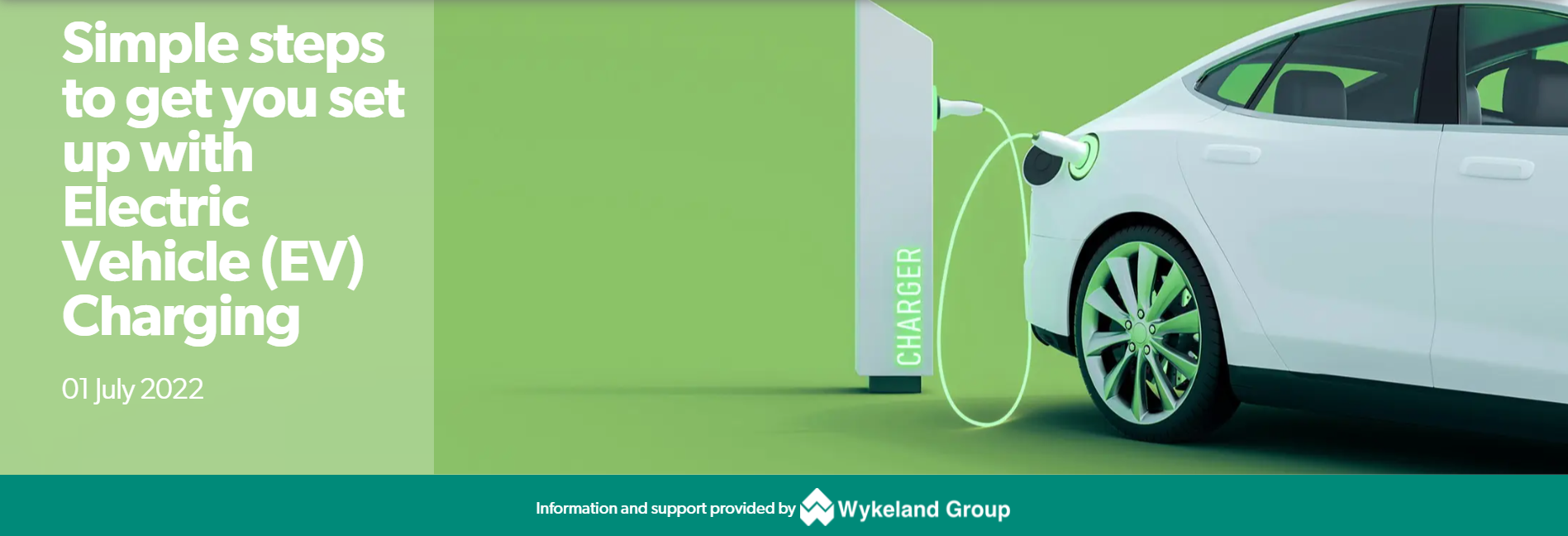Simple steps to get you set up with Electric Vehicle (EV) Charging
A helpful guide about the steps involved when planning your EV charging installation.
Did you know that between 2019 and 2020, global Electric Vehicle (EV) sales rose by over 40%?
Are you looking to get an EV charger installed, but not sure how to go about it? If the answer is Oh Yes! then we may be able to help. Whether you’re looking to have one installed for your personal use or looking to establish EV charging in your business – there are some simple steps to follow and some key things to consider.
One of our Oh Yes! Net Zero business partners, Wykeland, have lots of experience in EV charging as they have been rolling it out across their sites, so here are their recommended steps on sourcing an EV charging point:
Step 1 – Assess power availability
Check the capacity of your current electrical supply to see whether it can take any additional load. This can be completed by most qualified Electricians. For this, Wykeland partnered with BGP Services LTC – Nick Burton.
For smaller installations – most properties may be able to account for one or two 7.3kW chargers within your current electrical supply.
1a – Consider an application for additional supply
If your power load needs increasing, you need to make an application to the relevant Distribution Network Operator (DNO). In the Hull and East Riding region, this will mean making applications to Northern Power Grid.
Be aware that there is an associated cost for making the application.
Step 2 – Select your charger
There are various charger providers on the market – so it is key to research the providers to identify ones that meet your specific requirements. Wykeland partnered with Gavin Cumjamalay of Project EV for this stage (Project EV Homepage - Project EV)
Step 2a – Identify the size of charger needed
The chargers are available in both AC and DC current. The fast chargers work on an AC current and range from 7.3kW to 22kW outputs. Working on a 10 – 80% range, typical charging times are:
3kW – 7 ½ hours
22kW – 3 hours
The rapid chargers work on a DC current and start at 50kW. These are used in more commercial environments, commonly seen in retail car parks.
Working on a 10 – 80% range, typical charging times for a 50kW charger is:
50kW – 1 ½ hour
Note: The bigger the charger, the larger the electricity requirement (but the faster the charge).
Step 3 – Consider the Cost
The cost of the chargers can be broken down into setup costs (capital investment) and the running charges that are entailed.
The capital investment considerations should include:
Cost of any upgraded power supply
Cost of the charging units
Any works required to run cables externally
Installation costs to install the charger
If you are a business consider any new signage / marketing
The ongoing running costs should include:
The increase in power usage. Based on 20p/kWh the average 10 – 80% charge would be £11
License fees (these are only required for commercial installs)
Testing and maintenance
4G connection (if required)
For further information these websites may also be able to help:
Guide to charging electric vehicles - Energy Saving Trust
Electric Vehicle Consumer Code (electric-vehicle.org.uk)
Electric car charging – how it works and how much it costs | RAC Drive
We want to encourage as many people and businesses as possible to get started with EV charging and we know it is helpful to amplify the experiences that our partners have had. Keep checking this space regularly to see other highlighted case studies, and if you/your business wishes to feature in one – let us know. Be sure to tag us on social media too, if you’ve used these steps yourself, and share this article with others who you think would benefit from EV charging.
If haven’t signed up already, and want more information direct to your inbox please follow the link and sign up today https://www.ohyesnetzero.co.uk/signup/


